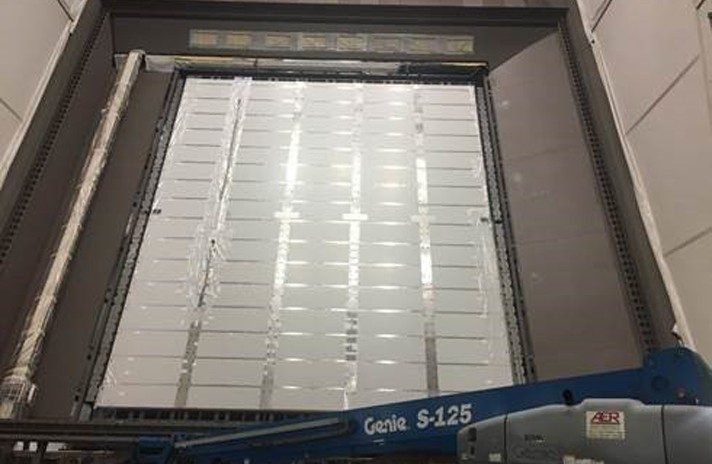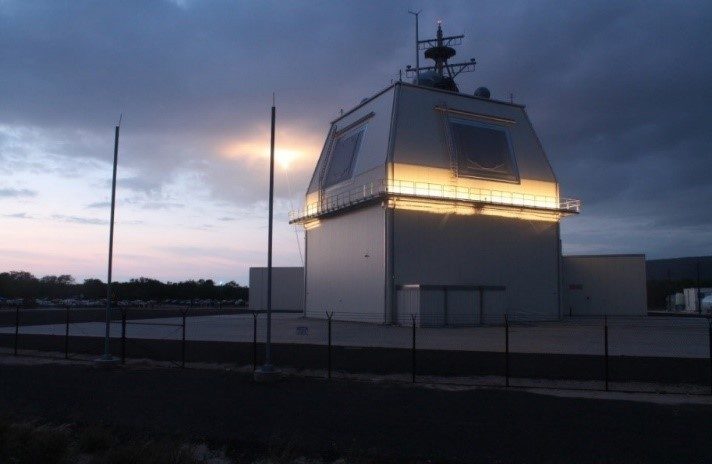From assembly of the smallest item (a High Power Amplifier with the diameter of a pencil eraser) to the largest (the Antennae, with a height of a four-story building and the width of five cars parked side by side), Long Range Discrimination Radar (LRDR) production by Lockheed Martin achieved significant milestones in the completion of 20 panels, to complete installation at Clear Air Force Base, Alaska, in 2020.
As the most advanced radar system in the world, LRDR provides 24/7 long-range ability to track, identify and help counter emerging threats. These massive arrays pack in a lot of performance, enabling more accurate discrimination over longer distances.

Courtesy: Missile Defense Agency
Uncertain Times, Unparalleled Capabilities
LRDR will utilize its unique polarization approach to accurately identify threats in a dense operating space helping to preserve the inventory of ground-based interceptors. Lockheed Martin engineers designed this next generation technology to be:
- Adaptable for Future Threats: The radar can be scaled and extended to adapt to new threat sets, like hypersonic threats, without changing the hardware design.
- Efficient and Reliable: Scalable and modular gallium nitride based “subarray” radar building blocks provide advanced performance and increased efficiency and reliability.
- Round the Clock Eyes on the Skies: Its unique maintain-while-operate capability provides very high operational availability and enables continuous operation.
Did You Know?
Despite the pandemic of 2020, the operations team finished production of all 20 panels for the radar’s two arrays, which were each shipped 5,000 miles to Clear Air Force Station.
- Panel production first started in Q2 of 2018 and took one year to complete.
- Panel #20, completed in October 2020, took 67 days to complete; an 81% reduction in cycle time.
- Panel 20 was completed with zero defects found by Defense Contract Management Agency (DCMA) on the front and back of the panel. This was a first for the LRDR team and is considered a perfect submission.
- During the LRDR production cycle, the program produced not only the smallest assembly, but also the largest.
- High Power Amplifier assembly – the diameter of a pencil eraser.
- Antenna – height of a four-story building and the width of five cars parked side by side.
- More than 100,000 High Power Modules (HPM) were manufactured.
- The production team completed 2,232 HPMs the week of March 22, 2020, marking the highest weekly total throughout the program.
- In support of off-array requirements, the team successfully transitioned more than 35 new parts to production and produced more than 426 units in support of LRDR cabinets alone.
Lockheed Martin shipped the last two panels and all cabinets to Clear, Alaska, at the end of October 2020 and has finished panel and cabinet installation at the site for both array faces.
Meeting the World’s Most Demanding Missions
Lockheed Martin will meet maritime and ground-based missions with the next generation of advanced radar technology. It was designated SPY-7(v)1 by the U.S. Government in October 2019 and it already has a jump start on production.
By leveraging LRDR’s mature technology as the building block for SPY-7, Lockheed Martin has been able to accelerate production of the radar by ordering long lead material for production just a few months after program award. The use of Lockheed Martin’s Solid State Radar technology across multiple platforms has allowed for the reduction of the cost of the radar by ten percent.

Including LRDR, Lockheed Martin has been awarded 24 solid state radar systems, representing a total of 91 antennas of varying sizes and collectively composed of over 15,000 subarrays. These radars provide several times the performance of previous SPY-1 radars and can engage multiple threats simultaneously with the latest proven interceptors. The total number of subarray suites produced on LRDR are equivalent to production of eight Aegis SPY-1D radar sets.
Why Lockheed Martin’s SSR is the World’s Most Versatile Radar:
- Polarization diversity: Provides better fire control quality tracking, target classification, clutter suppression, and electromagnetic environment mitigation.
- Most Efficient Architecture: Highest radar sensitivity for a given size, weight, and power.
- High Operational Availability – Innovative operate-while-maintain architecture enables continuous 24/7 operation with no radar downtime for maintenance.
- Digital Beamformer: Robust digital beamformer enables efficient use of radar resources over a large scan volume and improved tracking of advanced threats.
Lockheed Martin Missile Defense
The LRDR program is built upon S-Band radar technology and is the latest in a long line of S-Band radars developed by Lockheed Martin, including the Aegis SPY-1, Space Fence and Aegis Ashore. Lockheed Martin has demonstrated its commitment to advancing Solid State Radar technology and addressing emerging and evolving threats.
As a proven world leader in systems integration and development of air and missile defense systems and technologies, Lockheed Martin delivers high-quality missile defense solutions that protect citizens, critical assets and deployed forces from current and future threats. The company’s experience spans missile design and production, hit-to-kill capabilities, infrared seekers, command and control/battle management, communications, precision pointing and tracking optics, radar and signal processing as well as threat-representative targets for missile defense tests.




